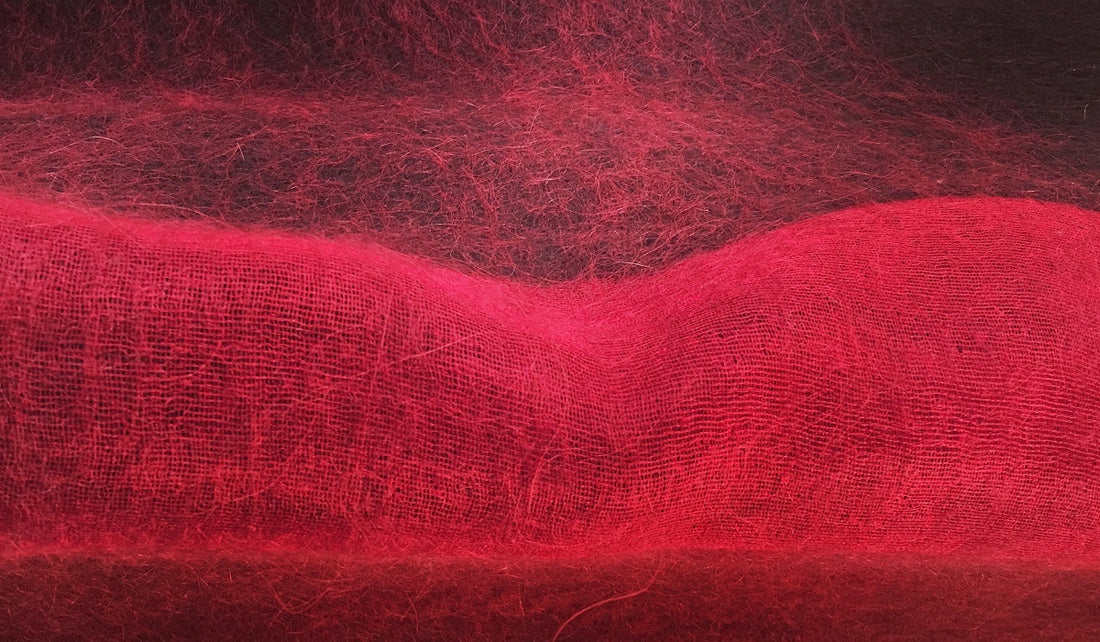
Biennale of Natural Dyes

Image: "Cochineal Felt Tapestry" 140cm x 197cm Marino wool on silk gauze, made by hand at the Centro de las Artes de San Augustin, Oaxaca Mexico © Nigel Atkinson 2015
Nigel Atkinson’s ‘Cochineal Felt Tapestry’ has been awarded first prize at the 1st Biennale of Natural Dyes (BOND) at The China National Silk Museum and has been purchased as part of the permanent collection.
Through an international event, "Colorful World: Overview of Natural Dyes," The China National Silk Museum celebrated the beauty of colours in nature, and explored the ancient wisdom and knowledge embodied in the traditional craft of dyeing.

As the Museum explains, “The advent of synthetic dyes in the 19th century brought a steep decline in the centuries‐old productions of natural dyes around the world. By the beginning of the 21st century, however, interest in natural dyes underwent a revival as urban dwellers rediscovered nature as the answer for achieving solace and harmonious living. Today, many international communities are advocating the use of natural dyes in modern practices and promoting research on ancient dyeing techniques.”
In addition to the award, the Museum organised a symposium on natural dyeing and an exhibition on the 300-year history of dyes on textiles in Europe and Asia, showing examples from its large collection of 17th -19th centuries world textiles.
Nigel made the Cochineal Felt Tapestry during a residency at CaSa (Centro de las Artes de San Augustin) in Oaxaca. Nigel says, “Working with their craftsmen was an honour for me as well as a source of learning and inspiration.”

Nigel’s work spans the mediums of drawing, painting, photography, textile and fibre. From his background at Portsmouth and Winchester Schools of Art, he specialises in textiles and has 30 years experience in hand processes of screen printing, weaving, embroidery, dyeing and working with craftsmen from England, Italy, France, India, Nepal, Japan and more recently Mexico.
The China National Silk Museum in Hangzhou opened in 1992 and is a Unesco world heritage site. It is one of the largest Textiles and Costume Museums in the world.
Read more about the history of silk in the current issue of Selvedge Issue 91 Luxe. We trace silk from its Chinese origins and follow it along the Silk Road, eventually to Europe.

1 comment
Well summarized. Helpful information!